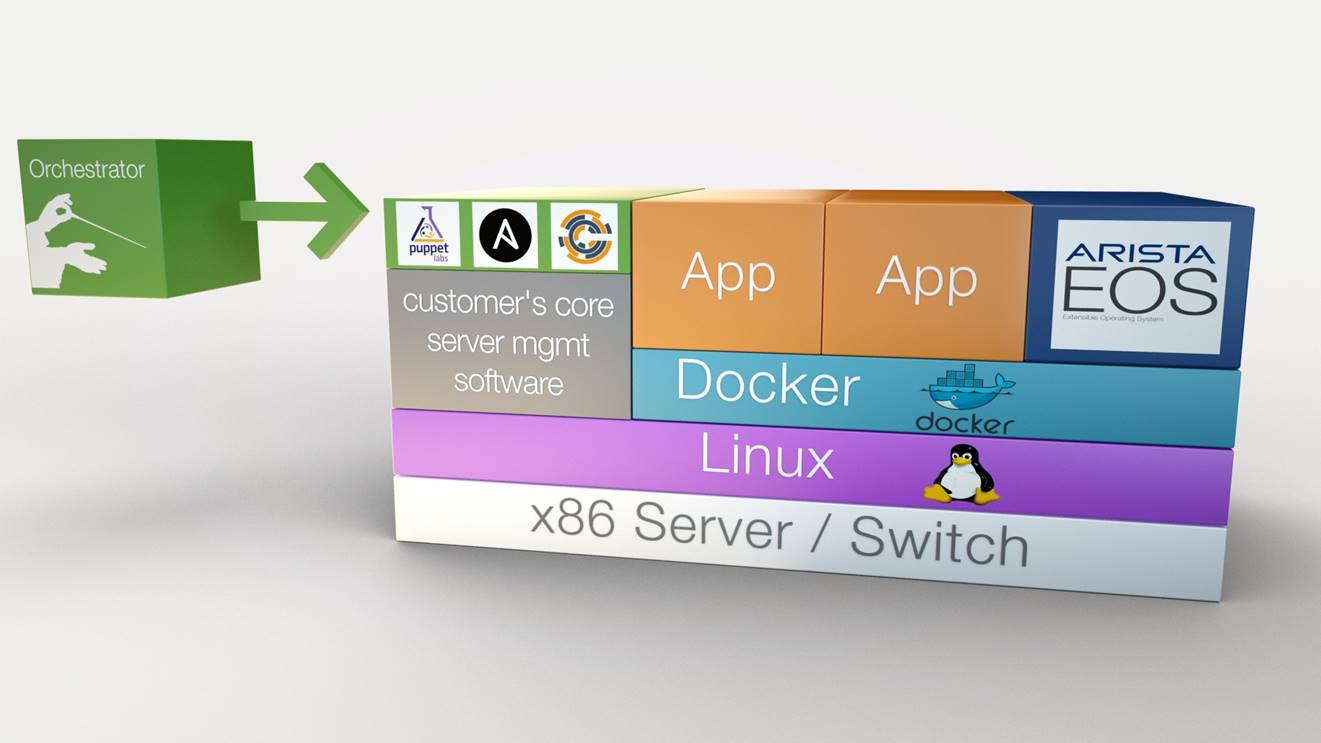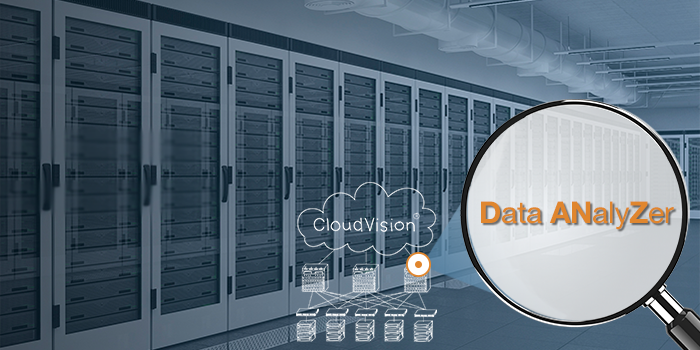Journey Through Open Networking
Arista has a decade long history of collaboration in open networking. We have pushed the envelope, co-developed open platforms and deployed them to build the world’s largest cloud -scale networks.
Next Generation Cognitive Networking
Just a decade ago, public cloud titans Amazon Web Services and Microsoft Azure Cloud, became synonymous with elastic scaling, and software provisioning through APIs. This was a phenomenon that didn’t exist within closed legacy systems.
Private clouds, by contrast, saw the relevance of enterprise customers recreating an infrastructure based on public cloud principles operating at a smaller scale. In an ideal world, both clouds would allow application developers to create and choose where to deploy applications without trade-offs. Arista pioneered technology development in this cloud networking category and today with Covid-19 restrictions driving millions of users to work-from-home, there are tremendous pressures on network access and bandwidth.
The Road Ahead for Cloud Area Network Migration
CIOs today mandate a ‘Cloud First’ or a ‘Cloud Only’ model for new IT investments with three different cloud models.
Delivering a Multi Cloud and Cloud Native Operator Experience
Right around the same time I joined Arista in 2009, Amazon Web Services developed the concept of the Virtual Private Cloud, one of the seminal technologies that became a core construct deployed throughout public clouds enabling enterprise customers to corral and protect resources and provision them into logical groups, align security policies, and simplify their management. Following this, Google developed a model for Virtual Private Clouds that spanned regions allocating one subnet per region by default - creating the first multi-region VPC within a single cloud provider.
Bringing Cloud Principles to The Enterprise
As legacy applications evolveto the cloud, hosted and multi cloud architectures blending on-premises data and applications with elastic scale-out and rapidly deployed cloud capabilities, legacy networking tools have been challenged causing them to become cumbersome and unreliable. The shift to cloud native architectures with containers, serverless instances and edge IoT sensors feeding in critical data, has significantly increased the number of devices that need to be managed. Meanwhile shrinking the amount of time available for provisioning, upgrades and change controls has become an issue.
The Choice Has Never Been Clearer
I am very excited about our next-generation R3 Series routing platforms, which are setting new standards for throughput, density, power efficiency and price performance. We designed these products to address the growing bandwidth demands in cloud datacenter and public networks, supported by significant Arista EOS enhancements including route scale, telemetry and security.
Cognitive WiFi is Here
Last August, Arista made its first acquisition, Mojo Networks, to transform the future of WiFi and campus networks. Just as Arista disrupted the datacenter with important architectural and technology-based innovations, I believe this is a similar pioneering step for the campus. Over the past two decades, the industry has deployed a WiFi controller-based architecture. This stagnant “WLC” approach for wireless connectivity has not evolved to address costly operational dilemmas such as:
The Modern Healthcare Enterprise
Until now the intersection of human healthcare and networking machines was somewhat loosely coupled. Healthcare has been historically stymied by regulations and compliance issues making the adoption of modern IT challenging. Yet today in a quest for longer and healthier lives we are driven by metrics to monitor our health, measure continuous feedback of our heart, breathing and track our physical activity and exercise. Digital healthcare is impacting the continuum of patient care and the overall patient experience, generating exponential increases in data, and creating unprecedented demand for increased network speeds and agility. Just as the financial industry took to modernizing real time banking, the time has arrived to leverage the power of the network to modernize healthcare.
The Easiest Way to go Faster is to go Faster
Why 400G Ethernet? In one sentence, because the easiest way to go faster is to go faster.
Over time, Ethernet speed transitions have been the primary driver for improving both the throughput and price-performance of datacenter networks. 400G Ethernet is the next major transition on this journey. While 100G Ethernet is still ramping up rapidly this year and next, it is projected that by the end of 2021 400G Ethernet will represent the majority of Ethernet bandwidth shipped.
Reflections on the Cloud Networking Decade
When I joined Arista ten years ago, we were in the midst of developing a novel purpose-built software architecture from a clean sheet of paper for networking. The financial services industry was in crisis, with the collapse of major banks like Lehman Brothers. In parallel, emerging slowly but surely, was a new breed of hyper-scale cloud operators. Amazon AWS, Microsoft Azure and Google GCP were in the early stages of shaping what was to become the public cloud. The requirements of these new titans provided a source of inspiration for the Arista founders and me. We couldn’t have predicted the pace nor the impact of this cloud fury; it came strongly and rapidly. As I reminisce over the past decade, it is clear that the cloud inflection has forever changed the face of enterprise IT for the better. Yet it is just the beginning, and there is much ahead.
Rethinking Security in Cloud Networking
Every CXO worries about security because the perimeter is changing; in fact, there are no walls for protection. The lines between cloud, workloads, applications, enterprise networks and hosts are blurring and the challenges are getting exponentially greater. The true security architect must rapidly address the reality of a more holistic network-wide security strategy. It must be one that goes beyond the cyber threat of the day to address the risk, scale and mitigation of persistent security issues. The state of cyber security needs urgent resolution because:
Unveiling Cognitive Campus Networking
At Arista Networks, the status quo inspires us to innovate and continue our mission to reinvent the network – from cloud to client. Today, we’re continuing that journey – into the campus network. Let’s face it; the legacy three-tier architecture of access-aggregation-core is wasteful and oversubscribed – creating a perfect storm for market transitions and Arista innovation.
CloudVision: A Cognitive Management Plane
The last 40 years have seen tremendous growth and progress in the data networking industry. Ethernet, IP, MPLS, GRE, IPsec, MACsec, and VXLAN enable operators to build secure, multiservice, high-performance data planes that interoperate across multiple vendors, multiple operators, and multiple administrative domains. Likewise, BGP, OSPF, IS-IS, LDP, RSVP, BFD, LACP, L3VPN, VPLS, and EVPN enable operators to build scalable multi-vendor control planes that federate across organizational boundaries, supporting mission-critical networks with global reach.
Cognitive Cloud Networking with Arista X3 Series
At Arista we have always embraced open networking trends by designing our hardware and software to be as programmable as possible, driving the use of merchant silicon and diversity for the broader industry. It has allowed our customers to select their favorite silicon architectures for the switch pipeline and choose the suite of software and hardware they want to form their cognitive network systems.
The Future of Cognitive Cloud Networking
Artificial Intelligence, machine and deep learning have to be among the most popular tech-words of the past few years, and I was hoping that I wouldn’t get swept away by it. But when I heard a panel on this topic at our customer event this month on the state of AI networks, I found it incredibly fascinating and it piqued my curiosity! Let me start with a note of disclaimer for readers who are expecting a deep tutorial from me. There is a vast amount of research behind models and algorithms on this topic that I will not even attempt to cover. Instead I will try to share some thoughts on the practical relevance of this promising field.
Arista Any Cloud Networking – Our Next Frontier
The modern cloud networking world is vastly different from traditional enterprise IT, and the gap is getting wider everyday. How does one truly scale across millions of machines and workloads globally? A decade ago, Arista pioneered the new software driven networking era and the same challenges now exist not only across the LAN intra-datacenters but also inter-datacenters via wide area networks (WANS). Although we have never promoted “SD-LAN” nor understood the “SD-WAN” hype, Arista has redefined software driven networking and pioneered the convergence between LANs and WANS.
Evolution from PINs to PICs Cloud Networking
Networking is simply so cool again after decades of static and stagnant silo designs. The rapid acceptance of universal cloud spine across a variety of clouds and industry verticals is a testament to just how critical of a problem this is to IT. By adopting a clean sheet of modern methodologies and code with a programmable state-based foundation, we are embarking on the next frontier.Managing the Cloud Network: CPM or APM?
We all know the future of enterprises is in flux with the consolidation or demise of Avaya/Nortel, Brocade/Foundry, Force 10, H3C and BNT assets. This speaks to the major trend of enterprise applications migrating to the cloud, any cloud be it public, private or hybrid. As this rapid transition prevails with efficiencies and scale, traditional applications and tools cannot meet the needs of exponential cloud growth.
The Catalyst for Cloud Networking with Containerization
Today’s applications are connected both to users and other applications, increasing traffic and profoundly affecting performance. Recently, there has been much discussion around the Application Performance Management (APM) category. This got me thinking about new cloud migration versus legacy application tools. Is the industry being myopic and dealing with silos?
Tap DANZing for Visible Cloud Networking
Networking is running blind. It is akin to driving a car in the fog at night without street lights, signs or a navigation system. Simply put, it’s a scary visibility problem, and it impacts the security and availability of the network. When coupled with massive shifts to virtualization, containerization, cloud-native applications and unstructured data, the insatiable telemetry demand is exponential. Every architect is looking for modern analytical methods of networking to gain visibility for millions of devices, data or events efficiently and consistently.



















